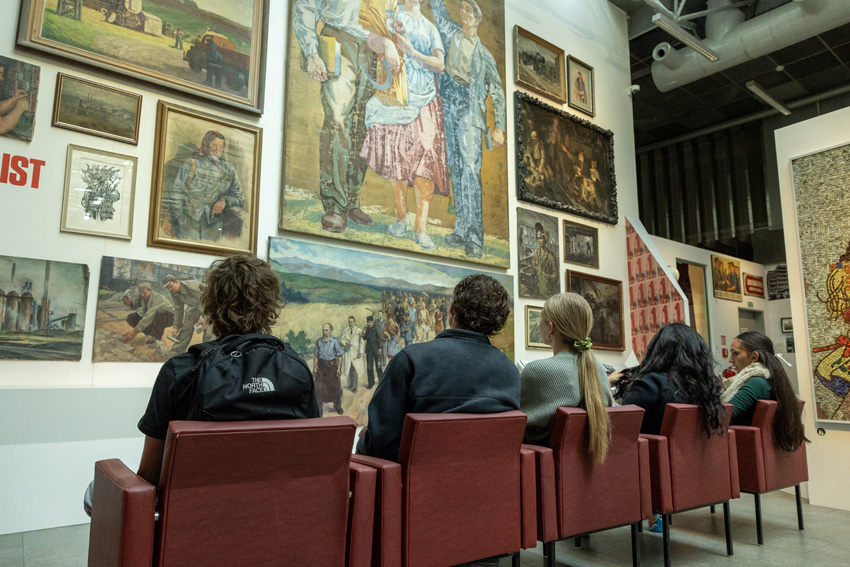
In the same way that a five year old carries their blanket or stuffed animal, students clutch their devices. With a laptop or tablet in one arm and a cellphone in the other, the hallways are bustling between classes. In order to eliminate the issue of kids carrying 40 pounds worth of textbooks in their backpack, Schoology and other online textbooks are a main aspect of the Bring Your Own Device (BYOD) program.
Director of Academics K-12 Michael Fenton has held a major role in the movement towards BYOD. In the past four years he has researched learning management systems that work best for the school.
“Schoology is a learning management system, it’s LMS for short,” Fenton said. “I found it by doing a lot of research into what all the different paid and free options were for LMS systems, what was most user-friendly, and we found that the best combination of all the features came in Schoology. I’ve been describing it to parents and teachers as this sort of centralized digital hub for all of your learning and classes.”
Fenton has worked on the program for four years, but two years ago he learned that the school decided to make the switch. He wants students to be able to do things with technology that goes beyond what kids are capable of without laptops or tablets.
“The options that we can open up with collaboration and students creating projects and moving into project-based learning,” Fenton said. “With BYOD a lot of those doors open more widely, or maybe more quickly rather than if we were working with pencil and paper.”
Sophomore Amber Wilson favors the program, but experiences problems concerning the Internet due to everyone logging on at once. Wilson also feels that BYOD has proven to be successful so far.
“It is a great way to have everything in one place and have more organization with your school work,” Wilson said. “I can see this working in the future because as technology evolves, we will be right there with it to advance when everyone else does.”
Now that students have access to the Internet, misunderstandings may be easily taken care of. Karagin Udall, ’17, uses Google to help her better understand homework and class discussions.
“I think the BYOD program is helpful,” Udall said “If I don;t understand something, I can quickly go on Google and look something up. I’m really looking forward to doing projects as well as power points on my device. I love using Schoology because most of your homework is listed in one place, and you have access to all of your classes.”
In class, Google Drive is used to create power points and other presentations to show student?s creativity with the information given.
Sally Rudolfs, ’18, fully supports the program. The reassurance of knowing homework and textbooks are in one place provides Rudolfs with confidence.
“Having students bring their own device is a great idea in my opinion because in our generation, having a laptop or tablet is a big deal,” said Rudolfs. “The ability to make power points and other presentations give you a head start in most college classes. It?s also helpful because I don?t have to carry a bunch of textbooks home now that I have everything on one device.”
For more features, read the Aug. 27 article New teacher encourages debate, shares story.
This writer can be reached via Twitter: @katiejacobson44






